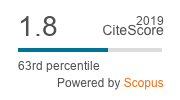Effect of internal controls on credit risk among listed Spanish banks
Abstract
Purpose: The paper examines the effectiveness of internal control systems, explores the exposure of Spanish banks to the dangers of default as a result of internal control systems and establishes a relationship between internal controls and credit risk.
Design/Methodology/Approach: Quantitative research approach is used to test hypotheses on the relationship between internal controls and credit risk among listed banks in Spain. Data from Bankscope and company websites from 2004-2013 were used. Generalized Least Squares (random effect) econometric estimation technique was used for the model.
Findings: We find that internal control systems are in place but their effectiveness cannot be guaranteed. This exposes Spanish listed banks to serious default situations. There is significant effect of internal controls on credit risk especially the control environment, risk management, control activities and monitoring. The non-disclosure of material internal control weakness is a contributory factor to the ineffective internal control systems. There is however a perceived board ineffectiveness which does not augur well for effective internal control systems. Board characteristics for Spanish banks confirm the agency theory.
Research Limitations and Implications: Data unavailability for certain years, variables and many inactive banks did not permit a larger sample size than expected. The use of quantitative variables lacks flexibility.
Practical Implications: Bank management will find the work useful to ensure strict enforcement of internal control mechanisms and see it as both credit risk and operational risk issues. Central bank should hurry to compel banks to disclose material internal control weakness as provided in the reviewed COSO framework.
Social Implications: Ineffective internal controls lead to credit risks, bank closure and loss of investments. Society suffers a lot from such losses and contagion. Disclosure of material internal control weakness is a social responsibility of banks.
Originality/Value: The authors are yet to come across the use of purely quantitative variables to model the effect of elements of internal controls on credit risk. This study opens and adds a new dimension of internal controls not only to be seen as operational risk issue but also credit risk.
Keywords
Full Text:
PDF[en]DOI: https://doi.org/10.3926/ic.703
This work is licensed under a Creative Commons Attribution 4.0 International License
Intangible Capital, 2004-2024
Online ISSN: 1697-9818; Print ISSN: 2014-3214; DL: B-33375-2004
Publisher: OmniaScience








